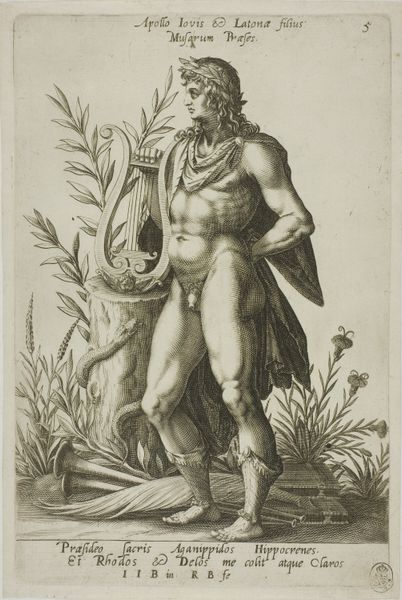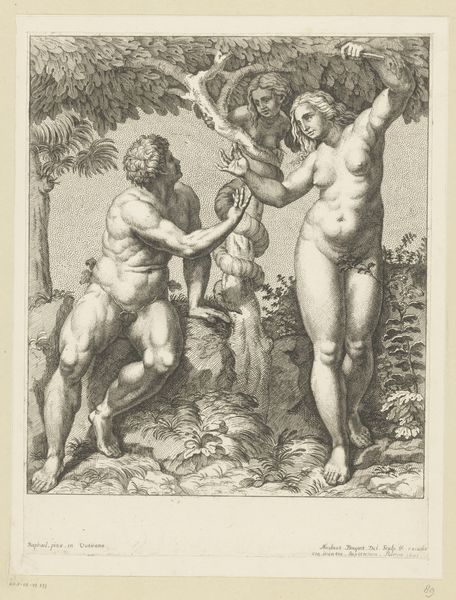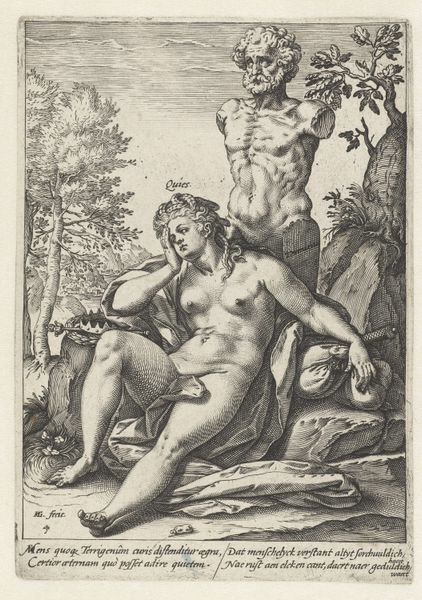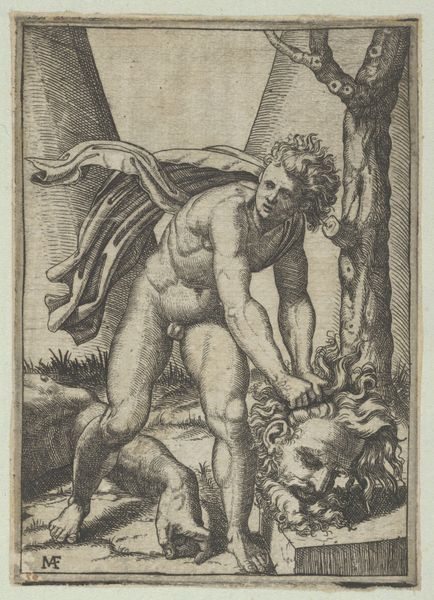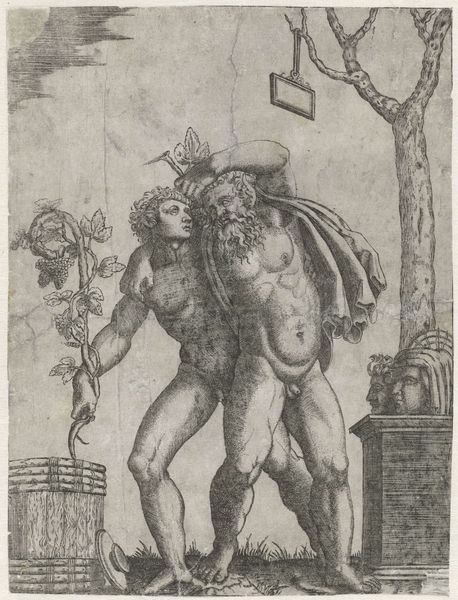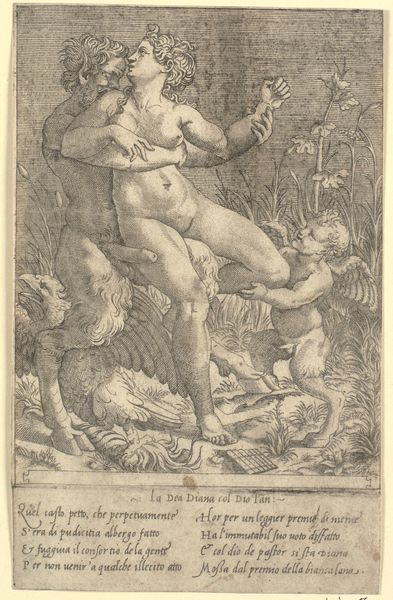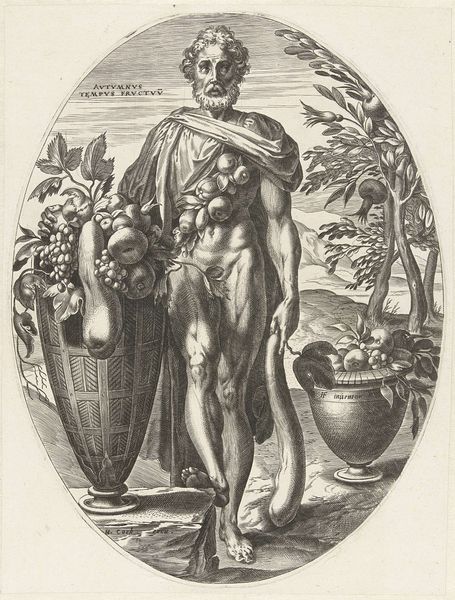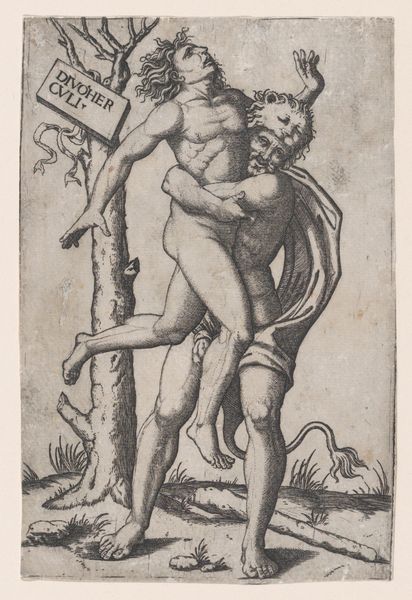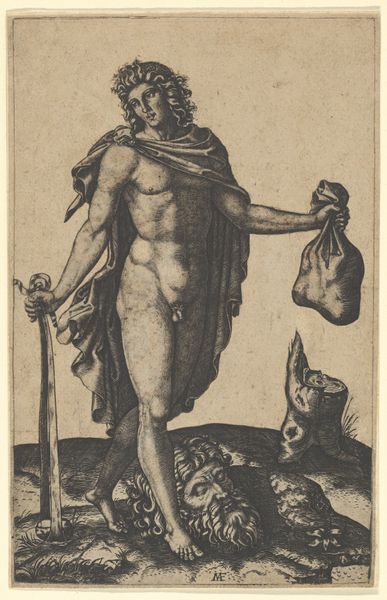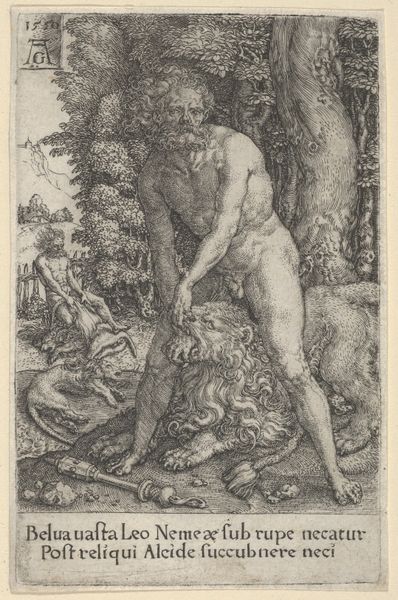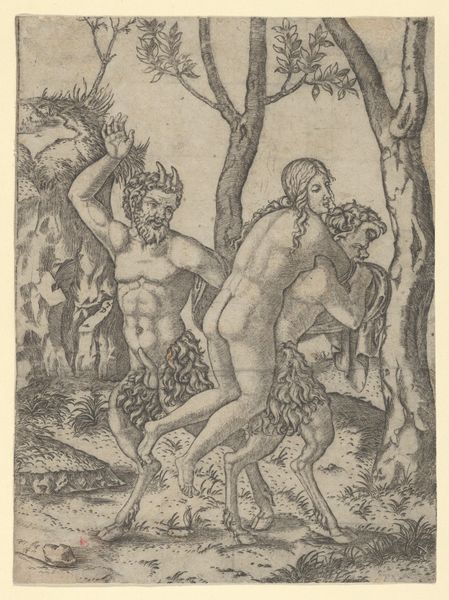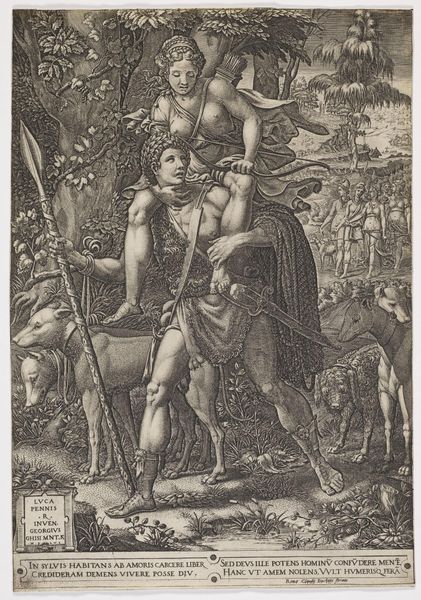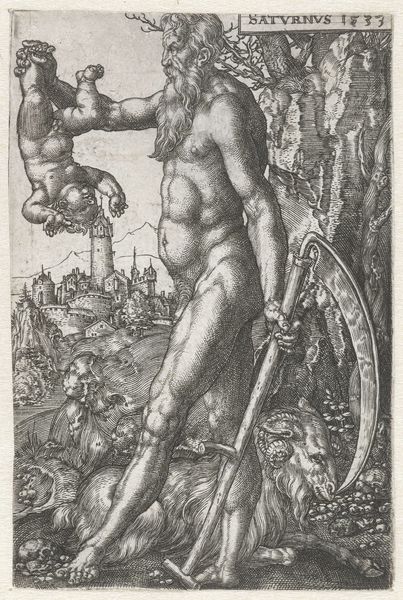
drawing, print, paper, engraving
#
portrait
#
drawing
#
allegory
# print
#
paper
#
11_renaissance
#
portrait drawing
#
italian-renaissance
#
nude
#
engraving
Dimensions: 251 × 180 mm (image); 274 × 180 mm (plate); 285 × 189 mm (sheet)
Copyright: Public Domain
Robert Boissard created this print, "Hercules, plate 16 from Parnassus Biceps," likely in the early 17th century, using the intaglio process. This involved engraving lines into a metal plate, inking the surface, and then wiping it clean, so that ink only remained in the etched lines. When pressed onto paper, the image is transferred. Look closely, and you'll notice the crisp, precise lines that define Hercules' muscular form, as well as the intricate details of the surrounding figures and foliage. The intaglio process requires considerable skill and patience. Each line had to be carefully etched, reflecting the engraver’s technical mastery. Prints like this one were made in multiples, making images accessible to a wider audience. This reproductive technology allowed for the widespread dissemination of artistic ideas during the Renaissance, contributing to the era’s intellectual and cultural ferment. By focusing on the material process, we can appreciate how this image participated in the wider world of labor, skill, and the circulation of knowledge.
Comments
No comments
Be the first to comment and join the conversation on the ultimate creative platform.
